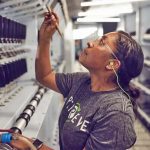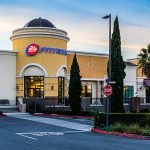Back-to-school seasonal spending is expected to reach an all-time high while back-to-college spending is expected to climb 10 percent year over year, according to Deloitte’s annual forecasts.
Key Takeaways
- Back-to-school spending is expected to reach a new high, up to $34.4 billion for K-12 students, or approximately $661 per student; back-to-college shoppers are expected to spend $28.3 billion, or approximately $1,600 per student.
- More than half (57 percent) of back-to-school shoppers surveyed are concerned about inflation, though many remain determined to purchase needed supplies, possibly driving spending per student up by as much as 8 percent.
- Back-to-school shoppers surveyed plan to decrease their spending on technology products by 8 percent year-over-year, while those shopping for college are set to increase their spend on technology by 22 percent from 2021.
- Despite stockout and inflationary concerns, the back-to-school shopping season is returning to a more typical timeframe with 53 percent of K-12 spending expected to occur by the end of July.
- As a result of the pandemic, K-12 parents reported planning to spend on products that encourage mental wellness, including items for extracurricular activities. Parents concerned about their child’s mental health (50 percent of respondents) plan to spend 8 percent more than the average back-to-school shopper.
- Many parents of K-12 students are willing to spend more for sustainable products, with 50 percent choosing environmentally friendly or responsibly sourced products when possible. Forty-seven percent of surveyed back-to-college shoppers also choose sustainable products when possible and report spending 19 percent more than the average back-to-college shopper.
Why this matters
After two years of disruptions spurred by the COVID-19 pandemic, parents are ready for a more “normal” shopping approach to the coming school year. However, inflation and other social and economic pressures will likely add complexity to the back-to-school season. Families appear ready to spend, even as 36 percent of surveyed K-12 parents are concerned about making upcoming school-related payments. That’s compounded further by expectations that the economy will weaken in the next six months for 54 percent of surveyed K-12 parents (up from 28 percent in 2021). Spending will reportedly focus on more traditional supplies as well as clothing and accessories for K-12 students as technology investments wane following two years of growth. However, for parents of college-age children, the same digital integration that has been underway since the pandemic is expected to continue to influence spending.
Parents plan to spend despite inflation, cost concerns
Following the disruptions of the past two years, most parents now face mounting inflation and financial concerns. Despite a more pessimistic economic sentiment, back-to-school spending is expected to increase to $34.4 billion this year according to respondents, or approximately $661 per student in grades K-12, up 8 percent from last year.
- Over half (57 percent) of surveyed K-12 parents are concerned about the increase in back-to-school product pricing due to inflation, especially as 1-in-3 households say they are in a worse financial situation than last year.
- Despite economic and inflation worries, parents are determined to deliver on back-to-school, as 37 percent of respondents expect to spend more year-over-year.
- Though concern for stockouts is still high (63 percent of respondents expect stockouts this back-to-school season), the shopping window is expected to return to a more normal pattern, demonstrating consumers may feel more comfortable navigating supply chain issues. That said, the shopping season will likely occur slightly earlier than usual, with 53 percent of respondents expecting back-to-school spending to occur by the end of July.
- Higher costs and lack of inventory could put brand loyalty at risk, as 77 percent of surveyed shoppers saying they will trade brands if prices are too high or if their item is out-of-stock.
“Even as economic and inflationary pressures sit top of mind, parents seem resilient and determined to ensure their children get the school supplies needed to succeed this coming year. Retailers that remain conscious of this determination, while being mindful to address shoppers’ ongoing economic concerns, could earn trust and position themselves strongly,” said Nick Handrinos, vice chair and U.S. leader, Retail, Wholesale & Distribution and Consumer Products, Deloitte LLP
Technology slows after a pandemic surge in K-12
While the last two years ushered in a new wave of online learning, shopping and subsequent spending, 2022’s back-to-school season looks more traditional. Overall spending on technology products is down, while spending on traditional products is on the rise.
- After a pandemic-fueled tech spree, spending in K-12 this year will likely focus more on clothing (up 18 percent for respondents year-over-year) and school supplies (up 7 percent). Technology spending is set to decline 8 percent this year for respondents, as many parents purchased needed technology supplies last year to meet virtual or hybrid learning needs. In addition, most parents (81 percent) say their child’s school provides the necessary devices and other technology to students.
- In-store shopping is expected to see a resurgence according to survey respondents, accounting for 49 percent of the overall back-to-school spend, up from 43 percent in 2021.
- Digital shopping channels reached a saturation point. Although still higher than pre-pandemic levels, consumers indicate digital fatigue. Online’s share of the back-to-school spending of K-12 parents surveyed decreased to 35 percent in 2022 from 39 percent in 2021. Only 35 percent of parents surveyed plan to leverage social platforms for their shopping this year, compared to 41 percent in 2021. While Generation X is using social media to seek deals, millennials are more likely to look for reviews and advice.
- With online shopping, free shipping is vital, with 79 percent of respondents saying it is more important than fast shipping.
As families reassess priorities, spending habits shift
Over the last few years, the pandemic caused many to focus on mental wellness and sustainability. Spending habits seem to be shifting as more families seek opportunities to address these priorities.
- Following the uncertain social landscape of the past several years, many K-12 parents are focused on their child’s overall mental wellness. Half (50 percent) of respondents are concerned about their child’s current mental health; as a result, 36 percent have purchased products or services in the past year to address this issue.
- Environmental sustainability is also top-of-mind for many, with half of K-12 parents surveyed saying they choose environmentally friendly or responsible sourced back-to-school products whenever possible. Those not selecting sustainable products often point to affordability as their biggest concern.
- These two priorities tend to lead shoppers to spend more — surveyed parents concerned about mental wellness report spending 8 percent more than the average back-to-school shopper, while those choosing sustainable options expect spending 22 percent more.
Back-to-college spending still depends on digital
As the pandemic continues to reshape higher education, the influence of digital trends remains. Back-to-college parents surveyed plan to spend $28.3 billion this year, or approximately $1,600 per student, up 10 percent from those surveyed last year.
- Despite economic concerns, parents of college-age students seem determined to spend, driven by digital integration in the college experience. Spending on technology products is expected to be up 22 percent year-over-year by respondents, compared to 16 percent growth in 2021, outpacing other categories including household appliances and supplies (up 12 percent), clothing (up 10 percent), and dorm or apartment furniture and supplies (down 15 percent).
- With 41 percent of surveyed students attending college in online or hybrid mode, surveyed parents plan to spend the same or more on online learning resources (51 percent) and buy fewer traditional college supplies (53 percent).
- As many as 77 percent of surveyed shoppers are likely to leverage credit sources to finance their back-to-college expenses, up from 70 percent in 2021.
- In-store’s share of back-to-college shopping expected to increase for respondents to 44 percent in 2022 from 39 percent in 2021. As retailers continue to offer more tech-enabled shopping tools, parents of college students are ready to leverage them: 59 percent of respondents will use smartphones for their back-to-college shopping (up from 49 percent in 2021), 30 percent will use social media (up from 22 percent in 2021), and 44 percent will use emerging technology (up from 29 percent in 2021 and 26 percent in 2019).
- Stockouts are a concern for college shoppers with 68 percent of respondents expecting to encounter them, leading to 56 percent of planned spending likely occurring by the end of July.
- Many college families are equally concerned about their students’ mental wellness (49 percent of respondents) and are seeking solutions. More than 1-in-3 (36 percent) of those surveyed will spend on products or services to address their students’ mental health.
“The continued digitization of the college experience is impacting everything from how students are learning to where families are shopping for supplies, and what they are buying. Online and hybrid schooling options are opening new doors for many to start their college careers, while still others are seeking to level the playing field after more than two years of pandemic schooling, by spending more to overcome both learning loss and mental wellness concerns. Retailers who meet these needs with a shopping experience that leverages the use of digital technologies could be well positioned to drive growth,” said Rod Sides, Deloitte Insights leader, Deloitte.















